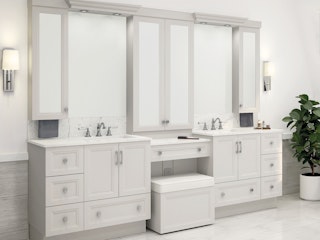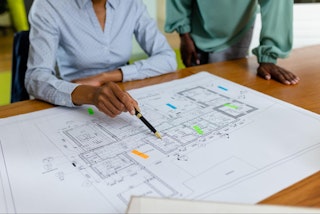Optimizing bathroom layout

Techniques for optimizing a bathroom layout
Are you a designer or construction professional looking to add a new dimension to your design projects? Optimizing the bathroom is essential for improving the quality of life of its occupants. By using its layout best, you can transform a functional space into a place of well-being and relaxation. Discover the key elements for creating a design that meets the highest expectations.
4 tips to maximize space
Making the best use of space in a bathroom is an essential priority. An intelligent arrangement of elements in this part of the home can significantly impact functionality and aesthetics, which should not be underestimated. Optimizing the bathroom layout improves circulation, facilitates access to equipment, and offers a comfortable environment for users. Several approaches contribute to creating bathrooms that are both ergonomic and aesthetically pleasing, in line with the expectations of the occupants.
Replace the bathtub with a shower
Installing a shower instead of a bathtub is one of the most effective solutions for optimizing a bathroom. A shower generally occupies less floor space than a bathtub, freeing up precious square meters in small bathrooms. Choosing a shower saves space and creates an impression of continuity, visually enlarging the room.
A shower can also be more easily integrated into corners or restricted spaces. This solution is essential for ensuring better circulation and facilitating the arrangement of other functional elements like additional storage furniture. Therefore, installing a shower is ergonomic and more practical, especially for the elderly or those with reduced mobility.

Utilize height
Optimizing the layout of a bathroom often involves intelligent use of height. Walls present a significant vertical surface that is usually underutilized. Several solutions exist for this purpose:
- Wall-mounted furniture: These elements free up floor space in a bathroom and make cleaning easier. Wall cabinets, medicine cabinets, or vanities hung up high allow storing many items while keeping the floor clear;
- Linen cabinets or storage columns: These vertical accessories store essential bathroom items such as toiletries and towels.

Opt for smart furniture
Certain types of furniture are specifically designed for bathrooms with limited dimensions. These "smart" accessories significantly contribute to optimizing this space. For example, the Mini-12 collection by Vanico-Maronyx features a vanity with a reduced depth of 12 inches or 30 centimetres.
This vanity has a large sliding drawer and a detachable auxiliary drawer to optimize the storage of items of various sizes. Thus, the furniture in this collection integrates clever storage solutions, allowing for the maximization of available space without compromising functionality.
Make use of every nook and cranny
Creating custom storage solutions is crucial for optimizing a bathroom layout and maximizing every square inch. Furniture adapted to the dimensions and constraints of the space effectively utilizes often-overlooked areas, such as corners under the sink or vertical surfaces. Integrated drawers under the sink or sliding furniture also maximize the use of frequently underutilized regions while maintaining a neat and streamlined appearance. These customized solutions allow the bathroom to gain order and functionality without compromising its aesthetic appeal.
2 techniques to create an illusion of grandeur
Making a bathroom appear more significant is essential for visually optimizing space. Several techniques enable designers and architects to achieve this, giving the room a sense of amplitude and brightness. This psychological approach helps compensate for the physical constraints of the bathroom and offers a more pleasant and functional space for daily use.
Play with colors and patterns
As true illusionists of space, bathroom designers use strategies based on colors and patterns to create an impression of grandeur. You can choose light and pastel colors for the walls, floor, and furniture, as they reflect light and give a sense of space. When selected carefully, patterns can also contribute to this illusion. For instance, vertical lines visually stretch the height of the ceiling, while subtle, repeated patterns create a sense of depth and divert attention from the lack of space.

Optimize lighting and brightness
Combining natural and artificial light sources is an effective technique for optimizing lighting and brightness in a bathroom. Mirrors are strategically placed to reflect light, amplifying clarity and creating an impression of space. Using fixtures embedded in mirrors or under furniture also helps diffuse a soft and even light, avoiding shadows that can visually shrink the room. An intelligent choice of light colors and reflective materials, such as glass or glossy tiles, further enhances this clarity effect and accentuates the overall brightness in the bathroom. These techniques can transform even the smallest bathrooms into bright and pleasant spaces.

Bathroom layout plans
Good planning is essential for optimizing a bathroom. Your layout plan allows you to visualize the space and test different configurations before work begins. The impact of each design option, such as replacing a bathtub with a shower, can be visualized during the study phase. The arrangement of elements observed through a plan also maximizes every available space. This planning additionally allows for choosing the dimensions and configurations of sanitary equipment best suited to the bathroom's size.
Conclusion
Optimizing the arrangement of all elements in a bathroom requires expertise and creativity. With various techniques, you can design functional, aesthetic spaces that meet the needs of every user.